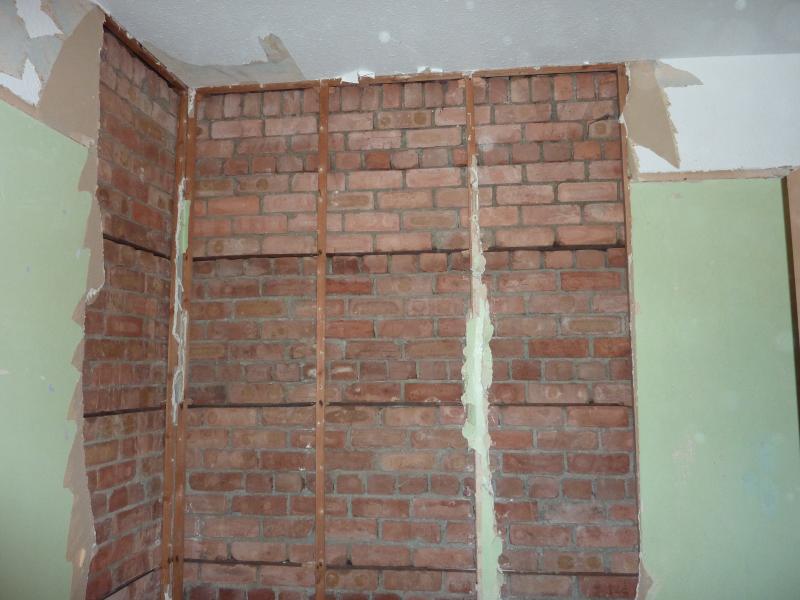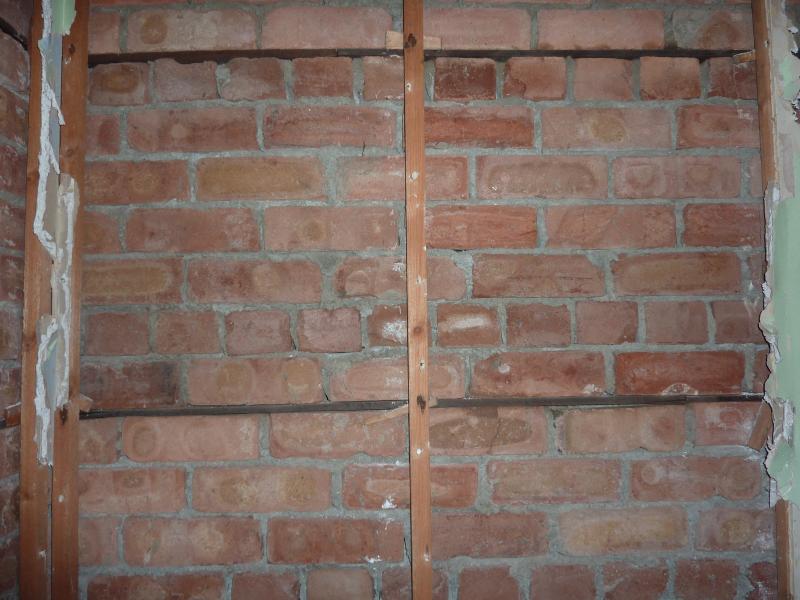I've just had my cavity wall surveyed with the veiw to get it insulated. Unfortunately my cavity is too small, 30mm, so the company wont do it. I'm thinking now to put insulation between the wall and the internal plasterboad. The gap is only 1inch would this be fine? I'm not keen on making it bigger
You are using an out of date browser. It may not display this or other websites correctly.
You should upgrade or use an alternative browser.
You should upgrade or use an alternative browser.
insulation behind plasterboard
- Thread starter jonnypetrie
- Start date
Sponsored Links
It will give a limited amount of thermal resistance, due to the thickness of insulation you are installing. Normally you would want something a little more substantial between wall and plasterboard, I would also recommend a vapour check barrier was also introduced to the system.
thanks for that. I've been looking at the 50mm kingspan and increasing the gap between the plasterboard and wall with 63mm stud timber. Somthing I'm a bit confused about is plasterboard standard size is 1.2m x 2.4m, and stub spacing should be 600mm. or 400mm. So why does kingspan come in 450mm or 1.2m width? would it not be better to have a size to fit inbetween the studs to avoid cutting, or am i missing somthing?
Rather than mess about with studs, have you considered direct fix insulated plasterboard;
http://www.british-gypsum.com/produ...es/gyproc_thermal/gyproc_thermaline_plus.aspx
http://www.british-gypsum.com/produ...s/gyproc_thermal/gyproc_thermaline_super.aspx
These combine good insulation with an integral vapour barrier & a plasterboard face.
http://www.british-gypsum.com/produ...es/gyproc_thermal/gyproc_thermaline_plus.aspx
http://www.british-gypsum.com/produ...s/gyproc_thermal/gyproc_thermaline_super.aspx
These combine good insulation with an integral vapour barrier & a plasterboard face.
Sponsored Links
yeah I have considered that, only thing I i put these up then I'm assuming you wont get any plugs/arial/network sockets in the wall, and no cables in it which is somthing I would have think about
with the ceoltex there would still be a gap (13mm) between the plasterboard and insulation for services.
I was thinking, what if I use dot and dab to put the insulation/platerboard combo on but leave say 200mm at the bottom where I will put in studs with 50mm insulation to allow me to put wiring through, how does this sound?
I was thinking, what if I use dot and dab to put the insulation/platerboard combo on but leave say 200mm at the bottom where I will put in studs with 50mm insulation to allow me to put wiring through, how does this sound?
I really feel for you on this one, since I have frequently considered what should I do for future cabling needs.
The answer I found is make sure you have plenty of socket outlets when you have access (before the plaster board goes on). At least fit conduit and backboxes for an electrician to use later if you have to. Mains wiring needs a lot more care than data stuff so get that sorted now.
Running some conduit horizontally for future data means you can cut into it later if you need to. Even that oval electical trunking can be used as a data conduit. Just make sure you have one access point to get into it. It can be a hidden access, so you then measure and record for future cutting out.
Sorry to say that unless you’re talking DIY retro fit, that’s going to be a total waste of time. No trade pro in this day & age is going to asre about pulling cables; decide your power & data cabling requirements & install before or it’s going to be cut, slice, fit & repair which, TBH, is far quicker & easierRunning some conduit horizontally for future data means you can cut into it later if you need to. Even that oval electical trunking can be used as a data conduit. Just make sure you have one access point to get into it. It can be a hidden access, so you then measure and record for future cutting out.
Sorry to say that unless you’re talking DIY retro fit, that’s going to be a total waste of time.
I agree - I was talking about DIY retrofit for Data. And you are right in part anyway, because whatever you do you can never cover every eventuality.
Started to take of the plasterboard in the livingroom, see pics below. Do you think the wall condition will be good enough for a dot dab insulation/plasterboard? Also, somthing I'm concerned about it the cavity is probably about 1inch, so not very big, and there seems every 4 rows the bricks are turned lengthways ie no cavity, so would moisture not get through?
I'm also thinking about getting bonded plasterboard/insulation and fixing that to the existing studs, overall wall thickness would only be 10mm more that what i was planning with putting new studs in and putting insulation between. But if i'm going to do it I want it done well!
I'm also thinking about getting bonded plasterboard/insulation and fixing that to the existing studs, overall wall thickness would only be 10mm more that what i was planning with putting new studs in and putting insulation between. But if i'm going to do it I want it done well!
I don't believe that is a cavity wall. Looks like English garden wall bond, which is solid 9" brickwork. By solid I mean there is no designed cavity, just a small space between the brick skins. The headers would go right through from one side to the other.
What is that material in the bed joints every seventh course and do you know how far into the joints it goes ?
What is that material in the bed joints every seventh course and do you know how far into the joints it goes ?
Its strips of wood you're seeing there, dont know if they go all the way through, why would these be used? As for the wall construction I've not heard of that type, have you any info about it?
Its strips of wood you're seeing there, dont know if they go all the way through, why would these be used? As for the wall construction I've not heard of that type, have you any info about it?
I was hoping the strips would be wood, it was difficult to see from the photograph. Closer inspection will reveal what they are used for. Before we started using various rawplug anchors, the traditional anchor was a built in timber pad. I strongly suspect these serve the same function. I would expect you to find the vertical studs nailed to them.
I have never seen that particular form of construction before, but it seems to be a form of dry lining to solid 9" walls. Perhaps your caviity wall surveyor was fooled by the apparent extra thickness to the wall construction it creates.
If your timber studs are dry and sound then you could use them again if you want to, adding a high performance insulation between the studs, before putting back the plasterboard. Add a vapour barrier over the insulation if the insulation does not come with any.
If you chose to use an insulated plasterboard, then it needs fixing as recommended by the manufacturer. I would need to check if you can dot and dab because of the insulation on the back!
Your suggestion to use an insulated board on the existing studs with added insulation between the studs, is in my opinion, probably the best way to go.
Edit: As for solid 9" walls, they will be fine if you have no signs of dampness penetrating. Thermally they are bad news but you are on course to make improvements. My own home is solid 9" brick and has no dampness. The same will be true of thousands of others. Occassionally a solid wall will allow penetrating dampness, but it is not the norm. English garden Wall bond is the way bricks are laid. A row of headers approx every six courses
Brick Bond types -->http://en.wikipedia.org/wiki/Brickwork I stand corrected, I think yours would actually be "Scottish Bond" according to wikipedia (look under the heading of American Bond), you learn something new every day
DIYnot Local
Staff member
If you need to find a tradesperson to get your job done, please try our local search below, or if you are doing it yourself you can find suppliers local to you.
Select the supplier or trade you require, enter your location to begin your search.
Please select a service and enter a location to continue...
Are you a trade or supplier? You can create your listing free at DIYnot Local
Sponsored Links
Similar threads
- Replies
- 12
- Views
- 2K



